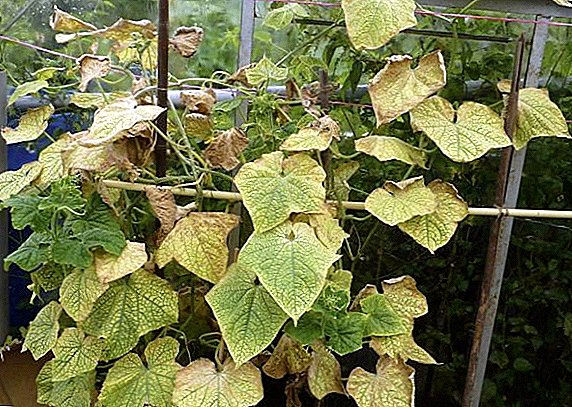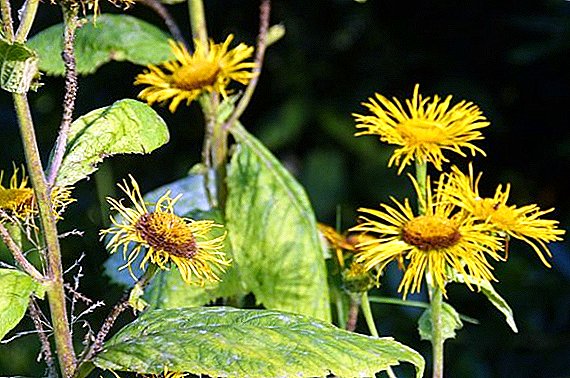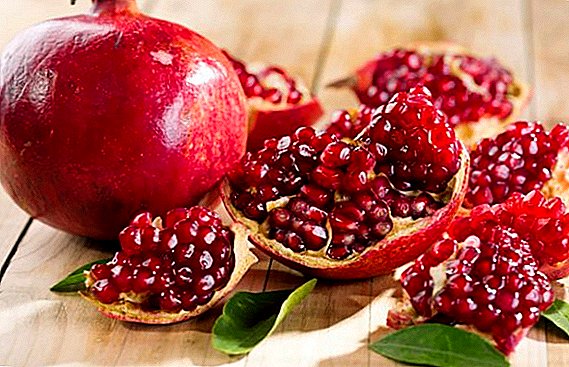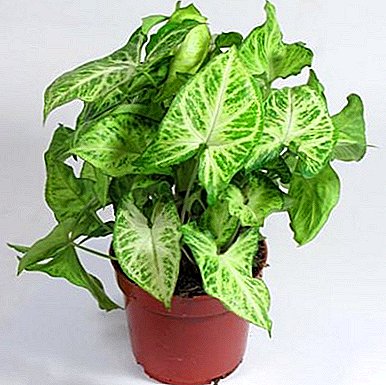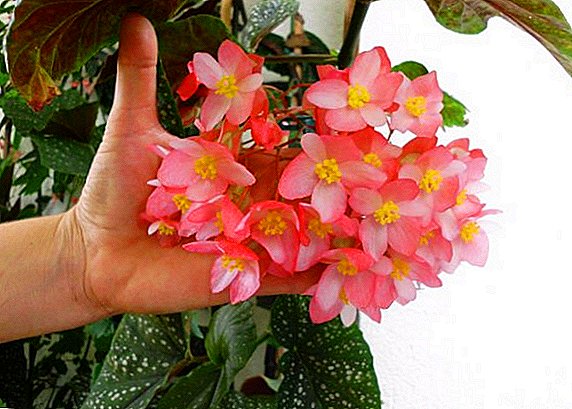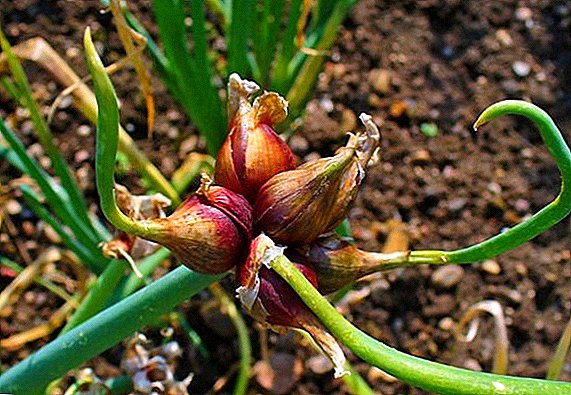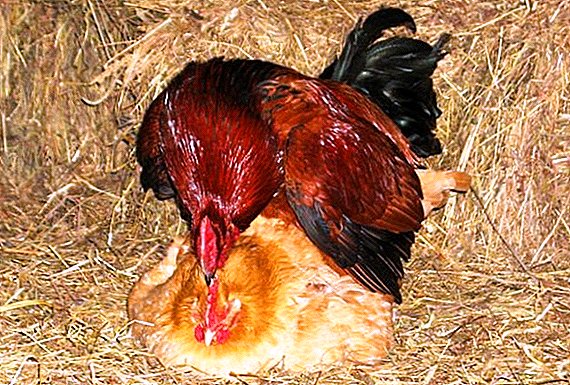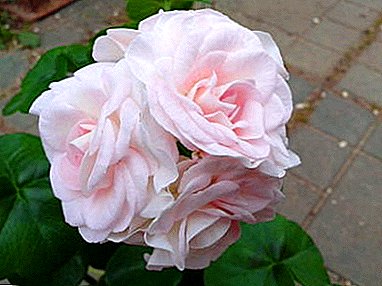
Rose-rose Pelargonium (rose-shaped or rosaceous), resembling a spray rose, is a decoration of the garden plot.
Rosebuds are hybrid varieties of pelargonium, characterized by an abundance of flowers, luxuriant buds and rare beauty.
The article will look at what are the main varieties of rosaceous pelargonium, especially breeding and care, as well as show a photo of flowers.
Origin
Rosebud Pelargonium belongs to the family of Pelargonium x hortorumto garden pelargonium. The origin of this species was discovered in the 19th century in Europe, in France. At the same time, the plant fell into the territory of the Russian Empire. The origin of the species is associated with a random mutation.
The plant first appeared in 1850 and became widespread in Europe. Particularly fond of rosebud pelargonium in England in the era of Victorianism. Flowers used in the manufacture of boutonnieres and bouquets.
Botanical description
 Externally, the plant resembles a shrub, reaching up to 80 cm. in height. The leaves are large, dense, dark green shade. The surface of the leaves is covered with a small down. The inflorescences of the plant are large and lush. The inflorescence consists of small flowers with a large number of petals. The flowers are collected in the form of a large ball. Each individual bud in the inflorescence looks like a rose bud, hence the name rose-bud.
Externally, the plant resembles a shrub, reaching up to 80 cm. in height. The leaves are large, dense, dark green shade. The surface of the leaves is covered with a small down. The inflorescences of the plant are large and lush. The inflorescence consists of small flowers with a large number of petals. The flowers are collected in the form of a large ball. Each individual bud in the inflorescence looks like a rose bud, hence the name rose-bud.
Rose Pelargonium is sold in flower shops, departments for gardeners, in household hypermarkets. The cost of rooted cuttings from 300 rubles per piece. Especially beautiful plants, valuable varieties, can be in the price of 500 rubles. per plant and above.
Appearance and features
Externally, pelargonium looks powerful, strong plant. The bush can grow up to 80 cm. Varieties have a common feature - the presence of terry petals. They do not have the opportunity to reveal themselves to the end, which resembles the appearance of a rose.
Pink peltonic pelargoniums have a very diverse appearance. Breeders brought types:
- zonal;
- ampelous;
- dwarf.
Today, there are even ibi hybrids that combine the qualities and appearance of three plant species at once. Zonal plants are tall and strong., with powerful stems, dense leaves. Ampoule flower species are decorated with leaves of dense structure, externally resembling a glossy surface, when flowering look like a cascade of inflorescences.
Dwarf species are preferred for planting and keeping the house in a pot. This species is distinguished by the unnecessary formation of the bush and pruning, while it blooms profusely and densely in the conditions of indoor content. The peculiarity of some varieties is the white border of the petal, shading a terry flower. At the same time, certain species have the peculiarity of changing color depending on the care, conditions of detention, fertilizing.
Common varieties of rozebuds and their photos
We offer to get acquainted with the description of especially popular varieties, as well as see photos of plants whose flowers resemble roses.
Rose of Amsterdam (Rose of Amsterdame)
Refers to the zonal miniature type. It has beautiful double flowers. In the beginning, the flowers bloom in white, as they mature, they become pink. In one cap of the inflorescence, there can be two colors at once - white and pink, which gives a special finesse and beauty. Inflorescences are small but densely planted. Abundant flowering during the summer season.

Supreme
The Rosebud Supreme plant differs from other species by a very late onset of flowering, but entering into the flowering pore, it disperses a huge number of inflorescences, each of which looks like a ball covered with small red rose buds. Bush plants powerful, strong, tall. Feels great on the windowsill and on the street in the summer. Not whimsical to care. On the reverse side of the terry petals lighter shade.

Apple Blossom
Plant Ableblossom rozbud grows very quickly and without careful and frequent formative pruning grows into a long, powerful bush. The plant blooms magnificently. Inflorescences differ originality colors. In the middle are green and white petals, then the color changes to white, and the edges of a delicate pink hue.

Vectis
The bush of this species is compact, easy to form, and flowering is longplentiful. With the beginning of spring, inflorescences are formed, turning into flowers of saturated red color. The outer side of the petal is much lighter than the inner. The plant blooms for a long time, maintaining the uniqueness of the form during the entire flowering period.

Pink (Pink Rambler)
This variety of zonal pelargonium is the most famous. Bush unpretentious care, has a powerful structure and lush, abundant flowering. Flowers bright, pink-carmine shade, foliage - rich, corrugated form. The wrong side of the petal is lighter. Pink begins to form inflorescences a little later than pink-flowered zonal plants, but it compensates for this with continuous flowering throughout the season.

Red
Presented variety refers to the early and having a long flowering. Bush compact, inflorescences lush and abundant. The color of the petals starts from a gentle red to a scarlet, bright red hue.
Flowering is very long, from May to September. The colors of the petals can be monotonous or have a color in the form of spots, strokes, stripes. The shoots of the plant at the base acquire a tree, the leaves are dense, trimmed from the front.

Growing at home
Pelargonium rosewood can grow both at home in a pot and in a garden bed. For planting plants at home, it is important to use light, loose soil, mixed with sand. At the bottom of the pot is laid drainage.
Rosebud pelargonium feels good indoors at a temperature of 18-25 degrees. In winter, the temperature should be 10-12 degrees. The plant is demanding of light. A pot with a flower can be kept on the east, west, south side. Shade and penumbra undesirable, it makes flowering is not abundant.
Watering should be regular, but you should not overfill or allow stagnation of water in the pot. Water used is better thawed, rain or defended. Top dressing is required during the flowering period of the plant and vegetation, once every 15 days only with mineral fertilizers.
Outdoor cultivation
Requirements for soil and lighting:
The site should be well lit. It is important that the sun's rays are not too active and the plant has not received burns. To do this, you can create a small artificial shadow in the hot period.
The composition of the soil requires a light, loose, not dense, the clay content is minimal, too dense ground, will not give sufficient air to the roots.
Ways
Pelargonium should be planted outside by planting or transplanting an adult plant from a pot to the ground.
Street planting is possible only with the onset of sustainable heat, without possible frost.
Benefits of landing on the street
The abundance of sunlight heals the plant, makes it brighter, the bush is stronger, the flowers are richer.
Under the conditions of open ground, natural hardening of the plant occurs.
Cuttings on the street take root faster and easier than in a pot.
Landing rules
 If it is necessary to plant an adult bush on the street wintering in the room, this requires certain rules:
If it is necessary to plant an adult bush on the street wintering in the room, this requires certain rules:
- With a strong growth of the plant, it must be cut off. It is important to observe the deadlines, to do it in February or in early March.
- Cut bush should be placed on the sunniest side.
- It is necessary to conduct a series of dressings.
- It is required to increase the watering of the plant, preferably through the pan.
- After the onset of sustainable heat, the plant is transplanted into the open ground by transferring an earthen coma from a pot to the ground.
Care
Rose Pelargonium feels good in the conditions of street content. Flower care basics are not complicated.
Watering
The plant requires watering as the soil dries under the bush. It is easier for a flower to transfer aridity than excess moisture. Too abundant watering leads to the development of fungal diseases, root decay. Water the plant better at an earlier time of day.
Top dressing
Rosebuds bloom for a long time and abundantly, for this they need a lot of strength. Mineral fertilizers once a month during the entire flowering period will be an excellent help for the flower. The introduction of nitrogenous fertilizers to the plant is not required. When fertilizing with nitrogenous fertilizers, the bush and green foliage will grow, which will not allow flowering. The introduction of nitrogenous substances into the soil is best left for autumn, after the flower has been transferred from the garden to the house.
Reference! It is much easier not to plant the plant in the ground, and move the bush from the house to the garden in a pot, leaving it there for the whole summer period. With the onset of cold weather you need to bring the pot into the house. In case of unstable weather, with an abundance of rain and a cool temperature, the option of carrying out a potted plant for a day is optimal.
Common problems
 Pests and parasites. Aphid or whitefly can live on a pelargonium bush. The parasites will suck all the sap from the plant, causing the plant to die. It is important to treat the bush with insecticides.
Pests and parasites. Aphid or whitefly can live on a pelargonium bush. The parasites will suck all the sap from the plant, causing the plant to die. It is important to treat the bush with insecticides.Plant disease. Most often the plant spoils the gray mold. When mold appears, it is important not to water the flower.
Yellowing and drying of the leaves. The plant lacks moisture. Perhaps the water does not get to the roots. Mulching will help.
Leaves sluggish, fall off. Excess moisture. Thinning of plants can help.
Does not bloom. This may be due to a lack of light and dressing. It is important to ensure the presence of a bright diffused color and regularly make mineral fertilizers for flowering plants.
The flowers dry. Perhaps the fungus wound up. Treatment with Fitosporin or watering with 5% Bordeaux mixture will help. The presence of rusty, gray spots, white fluff on the leaves may also indicate a fungus. It is important to ensure the loosening of the soil, for the entry of air and antifungal treatment.
Bacterial infection. Brown spots will appear on the plant. It is important to transplant to another soil, make fungicides.
Breeding
Rosebud pelargonias breed by cuttings. The best time to cut cuttings from March to July.
- From the flower cut half-woody cuttings.
- Each stalk should contain 3-5 internodes.
- Leaves need to be removed, and the cut dried for 30 minutes.
- Plant cutting preferably in a special substrate of 1 part soil and 1 part vermiculite.
- Pot, before planting to disinfect.
- Provide regular, moderate watering.
Within 3-4 weeks the stalk will take root. The emergence of new shoots - evidence that the plant has taken root. As you grow, you can form a bush.
Rosewood Pelargoniums - decoration of any garden or window. To preserve the health of the flower, it is important to observe the rules of planting, fertilizing, watering and lighting. With regular careful care and prevention of diseases, the plant will give a lot of seedlings for the garden and will delight the owner with abundant and long flowering all summer.


 Pests and parasites. Aphid or whitefly can live on a pelargonium bush. The parasites will suck all the sap from the plant, causing the plant to die. It is important to treat the bush with insecticides.
Pests and parasites. Aphid or whitefly can live on a pelargonium bush. The parasites will suck all the sap from the plant, causing the plant to die. It is important to treat the bush with insecticides.